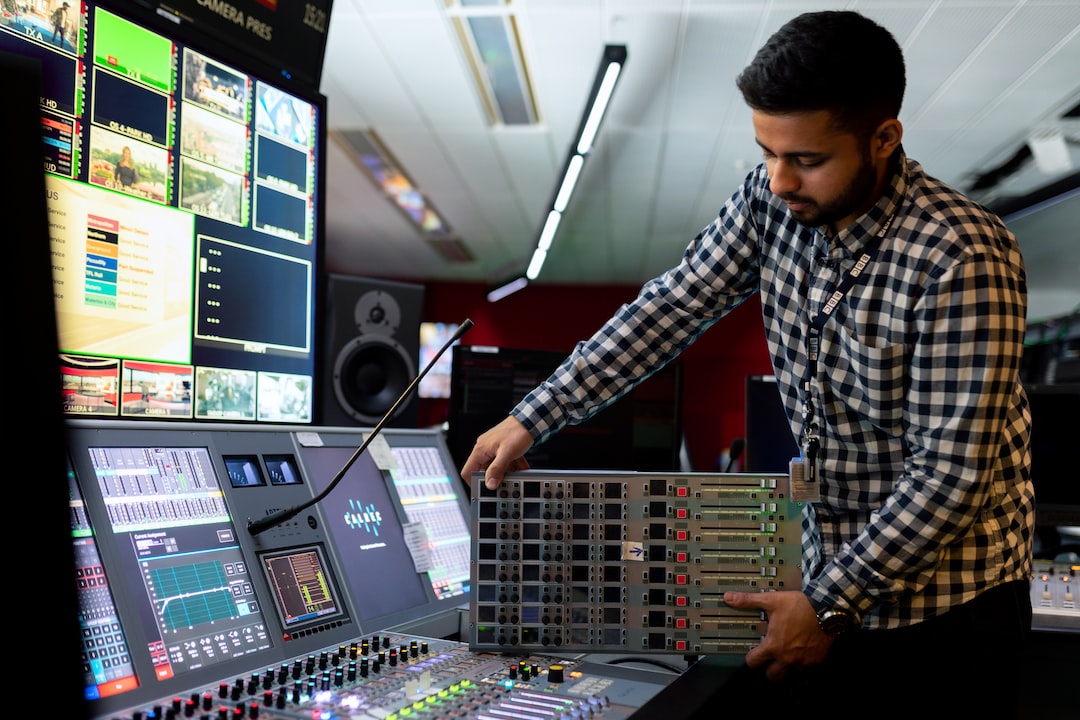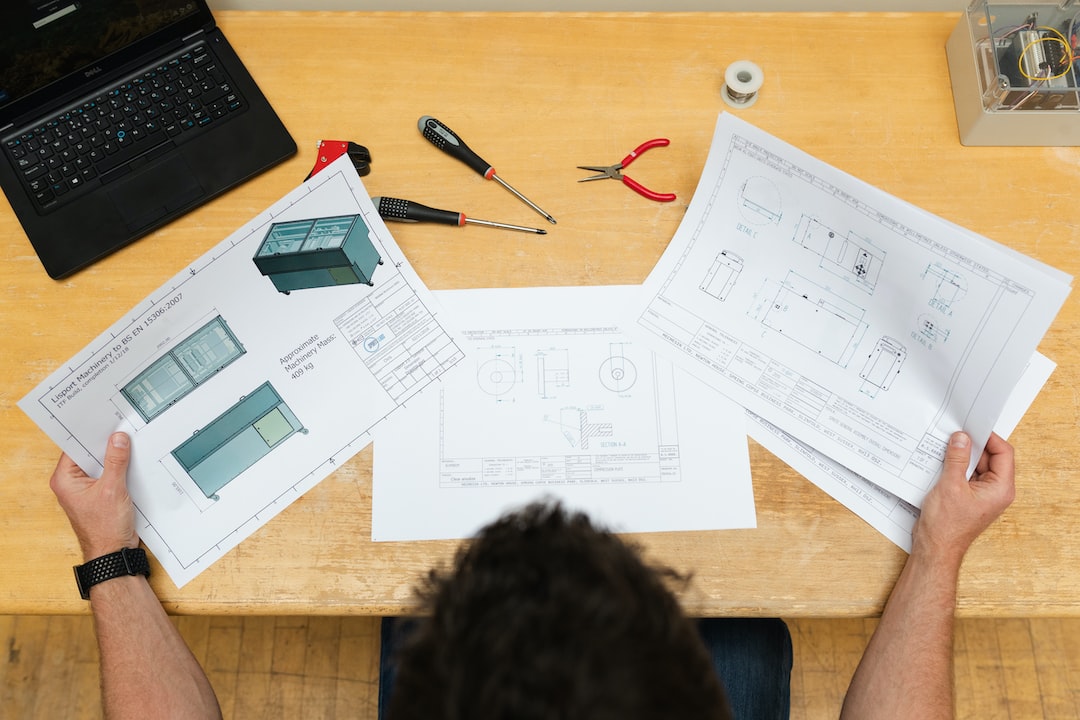I’m gonna start today’s ride with a simple truth: the future is wild. 🌍 Imagine a world where the tech we only dreamed about in sci-fi flicks is becoming a reality, where the lines between coding and building are blurred, and where the classrooms aren’t filled with chalk dust but with holograms and AI teaching assistants. Welcome to the future of engineering education. It’s not just about nuts and bolts anymore—it’s so much more. We’re talking sustainable design, AI evolution, quantum computing, and even solving global challenges. Grab your seatbelt, because what’s coming up is going to blow your mind. Ready? Let’s get into it! 🚀
The Rise of AI in Engineering Education
Okay, so let’s start with the elephant in the room: Artificial Intelligence. AI is seriously changing up the game in engineering education. Whether you’re into coding or just taking your first steps into the tech world, AI is going to be your new BFF. Imagine personalized learning models where an AI analyzes how you learn best and tailors the entire curriculum to fit your pace. Talk about #goals.
AI’s potential doesn’t just stop there. It’s stepping into testing and evaluating student performance. Forget those pesky standardized tests. Imagine an AI-powered assessment system that constantly tracks your progress and skills, giving you feedback in real-time. No more boring grades; it’s gonna be all about real-time development and personalized suggestions to help you level up.
Plus, let’s look beyond just the classroom. AI-powered simulations are breaking the boundaries of traditional labs. You can now engage in complex experiments without ever touching a beaker or qual through virtual labs that adapt to your specific learning needs. Even industries are catching on, favoring skills over grades and embracing a new kind of engineer who’s ready to tackle real-world problems with innovative solutions, thanks to AI education.
Virtual and Augmented Reality 🌐
Do you still think of VR as just a gaming thing? Think again. Virtual Reality (VR) and Augmented Reality (AR) are already infiltrating every aspect of life, and education is no exception. Engineering students can now walk through a 3D model of a building, interact with it, and even test different materials and loads—all while sitting in their living rooms. How cool is that?
AR, on the other hand, lets you overlay digital elements in the real world. Imagine wearing AR glasses that show you a step-by-step guide while you’re physically working on a prototype. No more guessing or sifting through manuals; AR ensures everything is laid out in front of your eyes in real-time. Sick, right?
But here’s the kicker—these aren’t just neat tricks. They actually help students grasp complex engineering concepts better. A study found that the tactile experience provided by VR and AR increased retention rates and boosted problem-solving skills. Engineering profs are hyped because this tech transforms abstract theories into something visual and interactive. Honestly, it’s the stuff of futuristic dreams.
And let’s not forget the collaborative aspect. Imagine working on a global team project while each member is in a different country, yet you all meet up in a virtual workspace, literally walking through your designs together. It’s a whole new world, and honestly, that’s the future of teamwork.
Blockchain and Credential Verification
Yo, has anyone told you about blockchain? If you only know it as that thing that powers Bitcoin, you’re missing out. It’s becoming a big deal in verifying educational credentials in a trustworthy way. Every academic achievement, certification, or merit can be logged into a blockchain, making it tamper-proof and easily shareable. Imagine never needing to submit a paper transcript again. Employers would already have a verified, unhackable record of all your grades and certifications. 🔒
The future’s all about decentralization—no more relying on middlemen like universities or government bodies to verify your hard-earned skills. You’ll be able to apply for jobs or other educational opportunities with digital badges that hold serious weight. We’re talking about taking control of your own educational narrative here; no more red tape, no more waiting. So next time someone tells you blockchain is all about crypto, hit ’em with some knowledge.
However, this isn’t just good news for students, but universities too. Academic institutions can save loads of paperwork and administrative costs, all while being more transparent and efficient. Plus, the fear of fake certificates and fraud will be a thing of the past. Ain’t technology amazing?
Personalized Learning Paths 📚
Ever feel like the traditional education system is like a one-size-fits-all t-shirt? Spoiler: it doesn’t fit everyone. The future of engineering education is all about personalization. No more sitting through classes that move either too slow or too fast for you. Personalized learning paths are going to be the norm, where curriculums adapt to your pace, your interests, and your strengths. Finally, education that feels like it’s built just for you.
Imagine being able to pick courses and modules that align with your career goals, right from your freshman year. Like a choose-your-own-adventure book, but for your brain. Flexible learning schedules are becoming a thing, along with micro-credentials. Instead of slogging through a one-size-fits-all degree, you’ll get to curate your own journey. Got a knack for coding but also love sustainable design? You can mix and match until your education is as unique as your Instagram feed.
And let’s not even get started on the emotional and mental benefits. Studies show that personalized education systems help reduce stress and improve mental well-being because students aren’t stuck in courses they don’t vibe with. Plus, it ain’t just about you; this adaptability also allows professors to offer more relevant, up-to-date knowledge. It’s basically a win-win for everyone involved.
Challenges in Accessibility 🌍
We have to talk about the other side of the coin. As sick as these advancements are, they come with challenges, especially when it comes to accessibility. Not everyone can afford the latest tech or fast internet speeds. In some parts of the world, there are still students without access to basic education, let alone high-tech gadgets. That’s the sad reality, fam.
The divide between those who can access these cutting-edge learning opportunities and those who can’t is getting wider. This digital divide is a massive issue that needs solving. Education is supposed to be the great equalizer, but technology could widen existing gaps if not handled right. We gotta ensure everyone has a seat at the table, and that means addressing these issues head-on—whether it’s by offering more affordable tech, boosting infrastructure, or developing low-tech solutions.
Also, let’s be real: when it comes to accessibility, it’s not just about hardware and software. Language barriers, cultural differences, and varying educational standards also play a role. Engineering education can be super technical, and those complexities need to be broken down in a way that’s understandable to all. No student should be left behind because they don’t have the "right" access or background.
Innovative solutions, like offline courses that can be downloaded and accessed without high-speed internet or AI-driven translators, are being developed, but there’s still a long way to go. If we don’t tackle this accessibility issue, the future of engineering education will leave many behind—especially those who most need it. All these dope advancements will mean nothing if they aren’t accessible to everyone.
The Role of Soft Skills in Engineering
It’s not all about hard skills, y’all. The workplace is changing, and so are the demands. You could be a coding god or a master in quantum mechanics, but if you lack soft skills, you’re going to struggle. Communication, teamwork, and problem-solving are becoming just as critical as technical ability. These skills are what separate the good engineers from the great ones.
Courses that mix technical expertise with leadership training, emotional intelligence, and teamwork exercises are on the rise. Why? Because the future engineer isn’t just someone who understands machines and systems, but also someone who can lead others and collaborate effectively. Think about it: in a complex project with multiple moving parts, the person who can bring everyone together and keep them on track is the real MVP. Just like how Captain America isn’t the smartest Avenger, but he’s def the leader. 😎
Now, let’s not forget that mental health plays a massive role in this too. Soft skills training often goes hand-in-hand with mental well-being, as it involves stress management, conflict resolution, and emotional intelligence. Professions like engineering can be super stressful, so learning to navigate those stressors will be crucial for the next-gen engineer. The goal is to produce well-rounded individuals who are not only smart but also emotionally intelligent.
Eco-Friendly Engineering 🌱
Get ready—saving the planet isn’t just for environmentalists. With climate change knocking on our door harder than ever, engineers have a serious role to play. From designing green buildings to innovating in renewable energy, the engineering curriculum is shifting to include more sustainable practices. Students are now learning to design with the environment in mind from the very start. Because, let’s face it, future engineers are going to be the game-changers we need to tackle global warming.
And it doesn’t stop at environmental engineering courses. Almost every discipline within engineering is starting to incorporate sustainability. For instance, chemical engineers are working on biodegradable materials, while civil engineers are focusing on constructing eco-friendly infrastructures. It’s all about making sure the future is green, yo.
What’s even cooler is that many universities are starting to collaborate with industries to solve real-world environmental problems. These partnerships give students hands-on experience, making them even more prepared to hit the ground running post-graduation. The goal here isn’t just to create more engineers; it’s to create engineers who are conscious of the impact they have on the world. 🌎
Lifelong Learning: The New Norm
Back in the day, you got your degree, got your job, and that was pretty much it. But catch this—now the name of the game is lifelong learning. Engineering isn’t static, and neither is the knowledge surrounding it. Technologies are evolving faster than ever, which means you gotta stay updated. Lifelong learning is becoming more than just a buzzword; it’s a career necessity.
Online courses, micro-credentials, and even just good ol’ YouTube vids are making it easier to stay on top of trends. Universities are recognizing this shift and offering modular courses that let professionals upskill or reskill without having to go back and get another full degree. That’s right; you could be juggling a full-time job while taking short, hyper-focused courses to boost your skillset.
This means engineering education is moving away from just being about degrees and certificates toward being more about relevant, up-to-date skills. And let’s be real, with all the amazing online resources at our fingertips, you can literally learn anything, anytime, anywhere. But remember, it’s not just about learning hard skills, keeping up with soft skills through continuous education is just as essential.
In short, you can’t afford to stop learning. The future belongs to those who are always curious, always learning, and always ready to adapt. So pack your bags, because this journey of learning? Yeah, it’s forever.
Collaboration with Industry
Let’s face it, textbooks are cool, but nothing beats real-world experience. That’s where industry partnerships come into play. Universities are shaking hands with tech giants, startups, and research institutions to bring real-world challenges into the classroom. These collaborations not only make learning more engaging but also make sure that what you’re studying is actually relevant outside the classroom.
Picture this: you’re working on projects that aren’t just for grades but are actual solutions for real problems faced by companies today. It’s like having internships baked right into your coursework. And the best part? You gain exposure to industrial processes, tools, and methodologies that are current and bleeding-edge. You know, the stuff that’ll make your resume look fire when you step into the job market.🔥
These partnerships also mean more resources for students. Companies are investing in campus labs, scholarships, and even offering mentorship programs. This blend of academic learning and industrial training ensures that graduates are ready to tackle the challenges of the workplace right off the bat. Like, for real, wouldn’t it be dope to build the future with the tools of today?
Diversity and Inclusion in Engineering
Here’s a reality check: the engineering field has been historically dominated by certain demographics, and diversity has been lacking. But times are changing. Diversity and inclusion are no longer just buzzwords; they’re becoming foundational principles in engineering education. Schools are making efforts to bring in students from all walks of life—different races, genders, and socioeconomic backgrounds. Can we get a heck yeah for that? 🙌
The goal? To bring fresh perspectives into problem-solving. Imagine the innovation that’ll come from a team that’s diverse not just in skills but in viewpoints. The more diverse the team, the more creative the solutions. That’s not just guesswork; studies show that diverse teams are more innovative and better at solving problems. The engineering field is realizing that diversity isn’t just a nice-to-have—it’s a must-have if we want to solve the world’s most pressing issues.
Universities are taking steps like offering scholarships, establishing mentorship programs, and providing support systems that help level the playing field. The idea is to create spaces where everyone can bring their full selves to the table. It’s not just about getting more diverse students into engineering programs—it’s about making sure they thrive once they’re there. The future of engineering is looking a lot more colorful, and honestly, that’s something to be excited about.
Engineering for Social Good 🌍
Engineering isn’t just about building the next big tech toy or making bank. There’s a growing focus on using engineering skills for social good. 🤝 Whether it’s developing affordable healthcare solutions, working on clean water projects, or even designing sustainable housing for underprivileged communities, engineering is becoming a force for positive change. And guess what? Your generation is leading the charge.
From hackathons aimed at solving social issues to entire academic programs focused on humanitarian engineering, there’s a shift happening. Students like you aren’t just looking to climb the corporate ladder; you’re looking to make an impact. And universities are responding to this by offering more opportunities to work on projects that have social, environmental, and ethical implications. This ain’t your grandparents’ tit-for-tat engineering job—it’s engineering with a purpose.
What’s even more inspiring is that this isn’t just limited to niche programs or electives. Core engineering curricula are being updated to include social responsibility as a key component. It’s about time, right? Because who says you can’t change the world and have a dope career? Score one for the planet and humanity! 🌍
The Challenge of Keeping Up 📅
But let’s be real for a sec. With so many advancements and trends, it can be overwhelming to keep up. The speed at which technology is advancing can make some students feel like they’re always playing catch-up. It’s like, just when you think you’ve mastered one thing, here comes a newer, shinier version. Keeping up with trends can be exhausting, not to mention expensive, when it comes to continually updating your tech or coursework.
So what’s the move? Time management, staying adaptable, and not sweating the small stuff. Engineering students are going to have to be more organized than ever. Prioritizing learning and being strategic about skill acquisition is key. You don’t need to know everything, but you do need to know how to find the information you need, when you need it. That’s gonna be your superpower. 💪
Moreover, universities and educators will need to be more proactive in helping students navigate this fast-paced environment. Some schools are already introducing digital literacy courses and stress management workshops to help students cope with the demands of this ever-evolving landscape. But as always, it’ll be up to the students to seize these opportunities. If you’re feeling overwhelmed, know that you’re not alone—it’s about learning how to surf the wave, not drown in it.
The Global Classroom
Guess what? The classroom as you know it? It’s global now. Virtual learning platforms and collaborations between international institutions mean that students can be learning from profs in Japan while sitting in a café in New York. . 🌐🤯 We already talked about VR and AR, but let’s also discuss how geographical boundaries are practically irrelevant.
This global perspective is changing the way engineering is taught and learned. It’s not just about local problems anymore. Students are exposed to engineering challenges from around the world and are encouraged to find solutions that can be applied globally. This borderless education also means that students can gain exposure to different cultures, workstyles, and engineering practices, making them more adaptable and effective engineers.
It’s also all about networking. Imagine the opportunities that come from being part of a global student community. The friends you make—and the connections you form—could very well turn into professional collaborations down the road. The global classroom is not just about learning but also about building a worldwide network that you can tap into throughout your career. 🌐✈️
Conclusion: Buckle Up, The Future Is Here
So, there you have it. Engineering education is evolving at breakneck speed. The trends are wild, the challenges are real, but the opportunities? They’re endless. Whether it’s embracing AI, exploring the virtual world, tackling global problems, or breaking down barriers, the future is full of possibilities. And guess what? You’re at the heart of it all. You’re not just participating in this future—you’re building it. So buckle up and get stoked, because the ride is just beginning. 🚀
FAQs
Q1: What exactly is AI’s role in engineering education?
AI in engineering education is like having a personalized tutor 24/7. It helps in creating customized learning paths, offering real-time feedback, and even simulating complex experiments without the need for physical labs. Plus, it’s contributing to grading and assessments, making tests more about learning and less about stressing. Imagine never worrying about pop quizzes again. It’s less about rote memorization and more about practical skills that matter in the real world.
Q2: How soon will VR be a standard part of engineering education?
VR is already a part of some engineering programs, especially in top-tier universities. While it might not be ubiquitous just yet, it’s rapidly gaining traction. Expect to see more widespread use in classrooms over the next 5-10 years. As VR tech becomes more affordable and accessible, it will likely become a staple in engineering education. Sooner than you think, you could be exploring 3D models and virtual labs on the daily.
Q3: How do I deal with the stress of keeping up with tech trends?
First off, breathe. 😮💨 You don’t have to know it all, just stay adaptable. Focus on what’s relevant to your field, prioritize your time effectively, and lean on resources like online courses and digital communities. Universities are also starting to offer workshops on stress management and digital literacy, so make the most of those. Remember, it’s a lifelong journey, so pace yourself.
Q4: Is the future engineer expected to know more than just engineering?
Absolutely. Today’s engineers need soft skills, a global perspective, and an understanding of ethical and environmental responsibility. Employers are looking for well-rounded individuals who aren’t just technically skilled but can also lead teams and solve problems in creative ways. Think of it as being an "engineering + influencer," but instead of selling products, you’re solving humanity’s biggest problems. 🌍
Q5: How can someone from a disadvantaged background get into engineering?
Programs and scholarships aimed at increasing diversity and inclusion are on the rise. Many universities and organizations offer financial aid, mentorship, and support systems specifically for underrepresented groups. Plus, with online resources being more accessible, you can start learning even before you get into a college program. It’s a challenging road, but totally doable. Stay committed, reach out for support, and don’t be afraid to chase your dreams. You got this, fam.
Q6: What does ‘engineering for social good’ mean?
It means using engineering skills to address societal challenges rather than just focusing on profit-driven goals. Think about creating affordable healthcare solutions, working on clean water projects, or designing sustainable housing. Engineering for social good is all about leveraging technical skills to make the world a better place. It’s about making an impact—and, let’s be real, isn’t that what we all want? 🌟
Q7: How can I stay competitive in this ever-changing field?
Continuously upskill and stay curious. Lifelong learning isn’t just a buzzword; it’s crucial in today’s fast-paced world. Take online courses, attend workshops, network with peers globally, and stay updated on industry standards. Flexibility and adaptability will be your best friends. Remember, the most competitive engineers aren’t necessarily the ones with the most knowledge; they’re the ones who know how to keep learning and adapting.
Sources & References:
- "The Rise of AI in Education" – Journal of Educational Technology
- "VR and AR in Engineering Education: A Review" – IEEE Access
- "Blockchain for Education: Opportunities and Challenges" – SpringerLink
- "Diversity and Inclusion in the Engineering Workforce" – National Academy of Engineering
- "Engineering for Social Good: Trends and Innovations" – Sustainable Engineering Journal
And there we go, y’all. The future of engineering education is not just something to watch for—it’s something to be excited about! Now, take this knowledge and go shape the future. You’ve got the tools, the inspiration, and now, there are no excuses.




